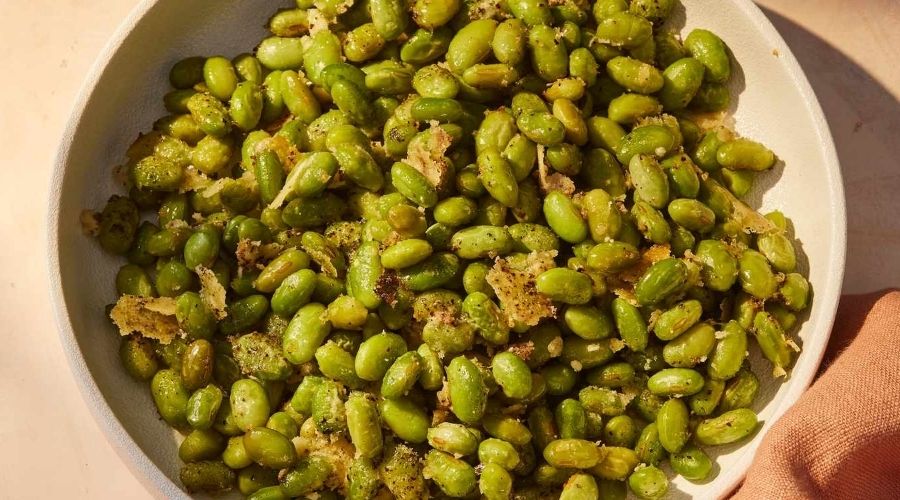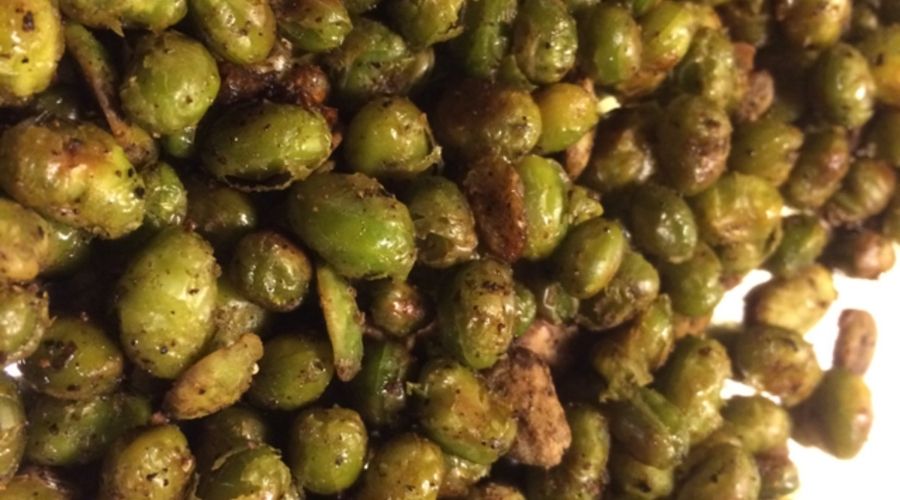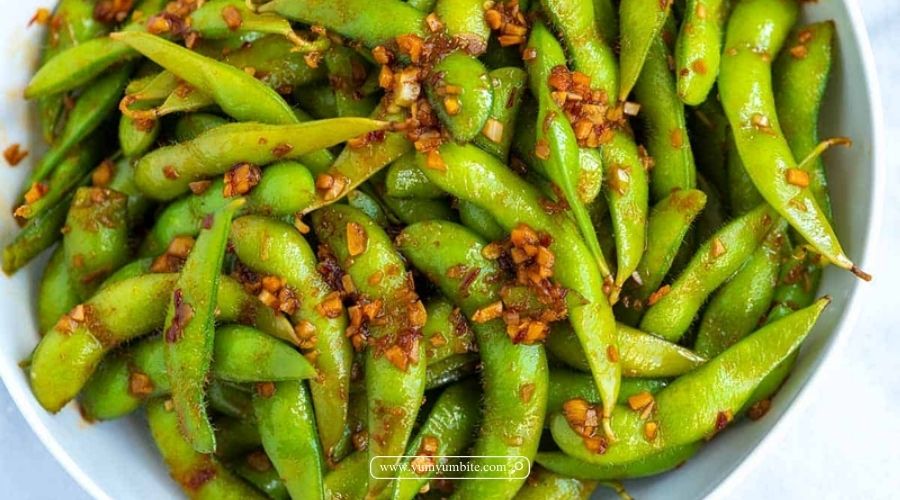Storing cooked edamame beans properly is crucial for maintaining their delightful flavor and nutritional benefits.
These tender green soybeans are not only a delicious snack but also a powerhouse of protein, fiber, and essential vitamins.
Whether you have leftover edamame from a meal or you’ve cooked a batch to enjoy later, understanding the best storage methods will help you keep them fresh and tasty.
In this article, we’ll delve into effective techniques for storing cooked edamame, including cooling, packaging, and reheating tips.
With these insights, you can savor your edamame at its best for days to come!
Why Storing Cooked Edamame Beans Properly Matters
Storing cooked edamame beans properly is essential for preserving their taste, texture, and nutritional value.
Edamame, young soybeans, are not only a delicious snack but also a rich source of protein, fiber, and essential vitamins.
When cooked, these vibrant green beans can quickly lose their freshness if not stored correctly, leading to changes in flavor and texture that can diminish your culinary experience.
Proper storage techniques help prevent spoilage and the growth of harmful bacteria, ensuring that your edamame remains safe to eat.
Additionally, correctly storing cooked edamame allows you to enjoy its delightful taste and health benefits for a longer period, whether you’re using it in salads, stir-fries, or as a standalone snack.
By taking the time to store your cooked edamame beans properly, you can maximize their quality and keep them ready for your next meal or snack.
How to Store Cooked Edamame Beans: A Complete Guide

Storing cooked edamame beans properly ensures they maintain their flavor, texture, and nutritional benefits.
Here’s a comprehensive guide to help you store your edamame effectively:
1. Cool the Edamame Quickly
After cooking, allow the edamame to cool to room temperature as quickly as possible. This helps prevent bacterial growth.
You can spread the beans out on a cooling rack or a baking sheet to speed up the cooling process.
2. Choose the Right Storage Container
Select airtight containers for storing your cooked edamame. Glass or BPA-free plastic containers with tight-fitting lids are ideal, as they protect against air exposure and moisture loss.
Avoid using containers that are damaged or cracked, as they may not seal properly.
3. Portion for Convenience
If you have a large batch of cooked edamame, consider portioning it into smaller servings. This makes it easier to reheat only what you need, minimizing waste and ensuring that the remaining beans stay fresh.
4. Label and Date Your Containers
Always label your storage containers with the date of storage.
This helps you keep track of how long the edamame has been stored, ensuring you consume it while it’s still fresh.
5. Refrigeration
For short-term storage, place the airtight container in the refrigerator.
Cooked edamame can be safely stored in the fridge for up to 3-5 days. Make sure your refrigerator is set to below 40°F (4°C) for optimal preservation.
6. Freezing for Long-Term Storage
If you want to store cooked edamame for a longer period, freezing is the best option. Place the cooled edamame in heavy-duty freezer bags or airtight containers.
Remove as much air as possible before sealing to prevent freezer burn. Cooked edamame can be frozen for up to 6-12 months.
7. Reheating Tips
When you’re ready to enjoy your stored edamame, reheat it gently to maintain its texture and flavor. You can reheat it in the microwave, on the stovetop, or by steaming.
Avoid overheating, as this can lead to a mushy texture.
8. Check for Signs of Spoilage
Before consuming stored edamame, always check for any signs of spoilage, such as an off smell, discoloration, or a slimy texture. If you notice any of these signs, it’s best to discard the beans.
By following these guidelines, you can effectively store cooked edamame beans, ensuring they remain delicious and ready to enhance your meals or snacks for days to come!
What to Look for While Storing Cooked Edamame Beans

When storing cooked edamame beans, several factors are important to ensure their quality, safety, and longevity.
Here’s what to keep in mind:
1. Cooling Process
Ensure that cooked edamame is cooled down quickly before storage. Rapid cooling helps prevent bacterial growth.
Aim to cool the beans to room temperature within two hours of cooking.
2. Quality of Storage Containers
Choose high-quality, airtight containers for storage. Glass containers or BPA-free plastic bags work best, as they prevent air exposure and moisture loss, helping to maintain the beans’ freshness and flavor.
3. Portion Control
Consider storing edamame in smaller portions.
This makes it easier to reheat just the amount you need without exposing the entire batch to air and potential spoilage.
4. Labeling
Always label your storage containers with the date of storage.
This practice allows you to track how long the edamame has been stored, ensuring you use it while it’s still fresh.
5. Refrigeration Temperature
Check that your refrigerator is set to below 40°F (4°C).
Proper refrigeration is crucial for slowing bacterial growth and maintaining the quality of cooked edamame.
6. Moisture Control
Ensure that the beans are dry before storing. Excess moisture can lead to spoilage and mold growth.
If you’ve added any seasoning or sauces, consider storing them separately to prevent moisture accumulation.
7. Avoid Strong Odors
Store cooked edamame away from strong-smelling foods in the refrigerator.
Edamame can absorb these odors, which can negatively impact its flavor.
8. Signs of Spoilage
Before storing, inspect the cooked edamame for any signs of spoilage, such as an unusual smell or slimy texture. If any signs of spoilage are present, it’s best to discard the beans.
By paying attention to these factors, you can ensure that your cooked edamame beans are stored effectively, preserving their delicious taste and nutritional value for future enjoyment.
How to Choose the Right Accessories for Storing Cooked Edamame Beans

Selecting the appropriate accessories for storing cooked edamame beans is essential for maintaining their freshness and flavor.
Here are some key considerations to help you choose the right storage solutions:
1. Airtight Containers
Opt for high-quality airtight containers made from glass or BPA-free plastic. These containers prevent air exposure, which can lead to spoilage and freezer burn.
Glass containers are particularly advantageous, as they do not absorb odors and can be used for both storage and reheating.
2. Freezer Bags
For longer storage, consider using heavy-duty freezer bags. These bags are designed to withstand low temperatures and minimize air exposure.
Be sure to remove as much air as possible before sealing to keep the edamame fresh and prevent freezer burn.
3. Vacuum Sealers
Investing in a vacuum sealer can be an excellent option for preserving cooked edamame.
Vacuum sealing removes air from storage bags, significantly extending shelf life and preventing freezer burn, making it perfect for long-term storage.
4. Portion Control Containers
If you often use edamame in recipes, consider portion control containers.
These smaller containers make it easy to store and reheat just the amount you need, minimizing waste and keeping the rest fresh.
5. Cooling Racks
Before transferring cooked edamame to storage, use a cooling rack to allow the beans to cool quickly and evenly.
This prevents condensation from forming inside the storage container, which can lead to spoilage.
6. Labeling Supplies
Have a supply of adhesive labels or a permanent marker handy for labeling your containers.
Clearly mark the date of storage, allowing you to track freshness and ensure you use the edamame within a safe time frame.
7. Microwave-Safe Accessories
If you plan to reheat your stored edamame, ensure that your storage containers are microwave-safe.
This allows for convenient reheating without damaging the container or compromising the quality of the beans.
By carefully selecting the right accessories for storing cooked edamame beans, you can effectively preserve their freshness, flavor, and nutritional value, ensuring they are always ready to enhance your meals or snacks.
How to Tell If Cooked Edamame Beans Are Bad After Storing
Knowing how to identify spoiled cooked edamame beans is crucial for food safety and maintaining the best taste. Here are the key signs to look for:
1. Visual Inspection
Start by examining the edamame beans visually. Freshly stored cooked edamame should retain its bright green color.
If you notice any discoloration, such as dullness or yellowing, this may indicate spoilage.
2. Smell Test
Use your sense of smell to assess the edamame. Fresh cooked beans have a mild, pleasant aroma.
If you detect any sour, rancid, or off-putting odors, it is a clear sign that the edamame has gone bad and should be discarded.
3. Texture Check
Feel the texture of the cooked edamame. Fresh beans should be firm and slightly tender.
If the beans have become slimy or mushy, this is a strong indication of spoilage, and you should not consume them.
4. Check Storage Duration
Consider how long the edamame has been stored. Cooked edamame can last in the refrigerator for about 3-5 days.
If it has been stored longer than this, it’s safer to discard it, regardless of its appearance or smell.
5. Storage Conditions Review
Evaluate the conditions under which the edamame was stored.
If it was left out at room temperature for more than two hours, or if it wasn’t stored in an airtight container, it may no longer be safe to eat.
6. Taste Test (If Uncertain)
If everything seems fine but you’re still unsure, you can conduct a small taste test. Take a tiny piece; if it tastes off or sour, it’s best to discard the rest.
By being vigilant and checking for these signs of spoilage, you can ensure that your cooked edamame beans remain safe and delicious, allowing you to enjoy them with confidence!
1. How long can I store cooked edamame beans in the refrigerator?
Cooked edamame beans can be stored in the refrigerator for about 3-5 days.
Make sure to keep them in an airtight container to maintain their freshness.
2. Can I freeze cooked edamame beans?
Yes, you can freeze cooked edamame beans. They can be stored in the freezer for up to 6-12 months.
Use heavy-duty freezer bags or airtight containers to prevent freezer burn.
3. Should I let cooked edamame cool before storing?
Yes, it’s important to let cooked edamame cool to room temperature before storing.
This helps reduce condensation in the container, which can lead to spoilage.
4. What’s the best way to reheat stored cooked edamame?
You can reheat cooked edamame in the microwave, on the stovetop, or by steaming. Ensure they reach an internal temperature of 165°F (74°C) for safe consumption.
5. How can I tell if stored cooked edamame has gone bad?
Signs of spoilage include discoloration, a sour or off smell, a slimy texture, or an unusual taste. If you notice any of these signs, it’s best to discard the beans.
6. Is it safe to store cooked edamame in aluminum foil?
While aluminum foil can be used for short-term storage, it’s better to use airtight containers or freezer bags for longer storage to prevent moisture loss and maintain quality.
7. Can I use leftover cooked edamame in other recipes?
Absolutely! Leftover cooked edamame can be used in salads, stir-fries, or as a topping for grain bowls. Just make sure they are stored properly and still safe to eat.
Conclusion
In conclusion, knowing how to store cooked edamame beans properly can significantly enhance your culinary experience.
By following the guidelines outlined in this article—cooling the beans correctly, using the right storage containers, and understanding shelf life—you can ensure that your edamame remains fresh and flavorful.
Whether you enjoy them as a snack or incorporate them into various dishes, these simple storage practices will help you reduce waste and make the most of this nutritious food.
With proper care, you can enjoy the delightful taste of edamame long after you’ve cooked them!
References
- https://www.thespruceeats.com/how-to-cook-edamame-2217370
- https://beanrecipes.com/edamame-recipe/
- https://www.inspiredtaste.net/45662/spicy-edamame/
- https://feastgloriousfeast.com/salt-chilli-edamame/
- https://www.kevinandamanda.com/edamame/


